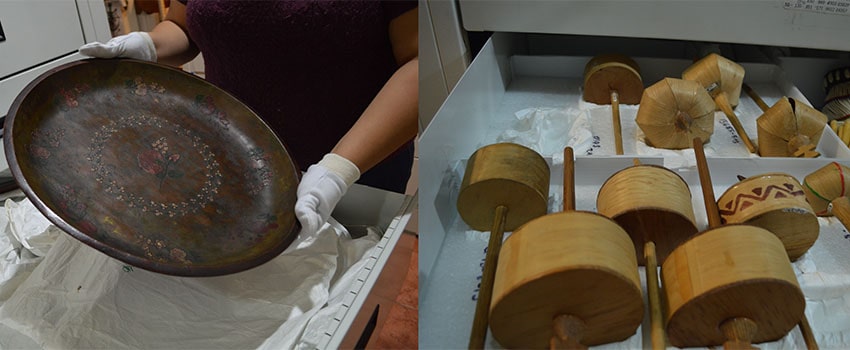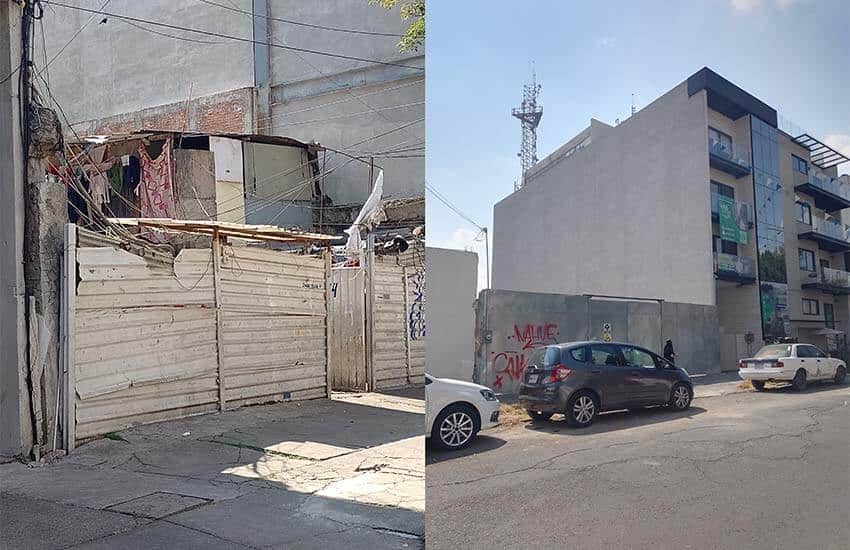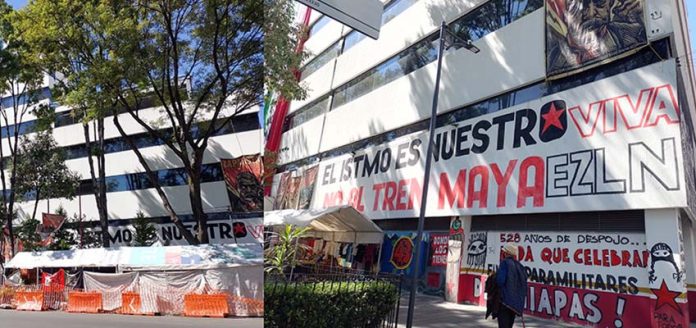If you go by the National Institute of Indigenous Peoples (INPI) building on Avenida México-Coyocán in Mexico City, you will not see any government workers there, but rather signs and activists and even some handcrafts and Chiapas coffee for sale.
After months of protests in front of the building, on October 12, 2020, the Otomis of the Emiliano Zapata-Benito Juárez People’s Revolutionary Union simply took over INPI’s offices. Since then, none of the federal agency’s staff have been inside.
Such occupation of federal buildings is certainly nothing new in Mexico, but there is a plot twist: the fate of an irreplaceable collection of 23,000 pieces of Mexican folk art.
The people who have taken over the building are principally those that live in Mexico City, with roots in Santiago Mexquititlán, Querétaro. Starting in the 1960s, waves of indigenous Otomis and Mazahuas have been migrating to the capital from México state, Querétaro and Michoacán for both political and economic reasons.
Life in the city has not been easy for them, and many took over abandoned lots and earthquake-damaged buildings and made them their homes. For decades, they have fought with city authorities to remain in a number of these places, including in the regentrifying neighborhood of Roma. They’ve also struggled to get government-sponsored housing constructed on these lots.

In the summer of 2020, it looked like they were making progress when the city moved to expropriate four lots of land to build such housing. But then the pandemic struck, halting everything.
Frustrated with what looked like yet another stalling tactic, the Otomis began protesting at offices of INPI, whom they believe should be more intimately involved in the matter.
When talks with the city broke down yet again in the fall, the Otomis voted to take over the building on Columbus Day.
Few might have cared about an office building, and indeed the occupation drifted along for more than a year. However, a recent interview by INPI head Adelfo Regino in January changed that by bringing attention to a collection of folk art housed in the building.
This is not just any collection of Mexican folk art: the collection of the National Museum of Arts and Folk Industries (MNAIP) is the first national collection of Mexican folk art in Mexico itself.
Founded in 1951, it brought together pieces dating as far back as the 17th century, began competitions to expand the collection with examples from living traditions, and is credited with bringing back handcraft traditions in several states that nearly disappeared.
Unfortunately, its building in Mexico City’s historic center was heavily damaged by the 1985 earthquake. Efforts to keep it open succeeded until 1998, when it closed for good.
Possession of the collection remained in federal hands and eventually became the property of INPI with the name of Acervo de Arte Indigena (Indigenous Art Heritage), despite the fact that most pieces are made by those of mixed heritage.
However it does have more work by indigenous peoples than many other collections.
INPI has a small museum in the north of Mexico City, where some pieces are exhibited, but the vast majority have been warehoused in facilities at the Mexico City office building, with specialized rooms conditioned for maximum preservation.
The importance of the collection is not generally known by the public, but the pieces have been available for viewing by researchers and museums both in Mexico and abroad. But since October 2020, INPI staff and other specialists have not been allowed to enter or work with the collection, raising concerns about its safekeeping.
Some of that concern is that there will be plundering of the collection, not because of anything this Otomi group has done but because such things have happened in Mexico before.

But the main problem, according to Regino and several experts, is that the collection’s environment needs to be monitored at least daily for temperature and humidity. The occupying Otomi group has locked the specialized warehouse areas, put tape on the doors and more to keep any accusations of theft away.
And so no one has gone into these rooms for over a year. That means that no one knows the conditions of the pieces inside.
Regino’s alarm has caught the attention of folk art experts such as Sol Rubín de la Borbolla (son of the founder of MNAIP) and scholar Marta Turok. It’s also generated accusations hurled at President López Obrador of failing to protect the collection.
In the meantime, the Otomi and INPI have traded accusations of neglect. INPI blames any possible damage to the collection on being blocked from it, but the Otomis put the responsibility onto INPI for ignoring their demands and not paying the power bills, resulting in various outages.
The indigenous protesters also accuse Regino of “criminalizing” their rights to protest, with INPI making a formal complaint to the city for the taking over of the building.
The day after Regino’s interview with the newspaper Reforma, the Otomi group held a press conference to demand meetings with INPI directors and other experts about the collection. It is not yet known if there has been any progress on this front.
Although the fate for the four lots of land in Mexico City (Londres 7, Guanajuato 200, Calzada Ignacio Zaragoza 1434 and Zacatecas 74) were the spark for the takeover, the list of demands has grown.
They now include a halt to renovations in the Otomi hometown of Santiago Mexquititlán and a halt to the Maya Train project in Yucatán.
The standoff continues.
Leigh Thelmadatter arrived in Mexico 18 years ago and fell in love with the land and the culture in particular its handcrafts and art. She is the author of Mexican Cartonería: Paper, Paste and Fiesta (Schiffer 2019). Her culture column appears regularly on Mexico News Daily.
